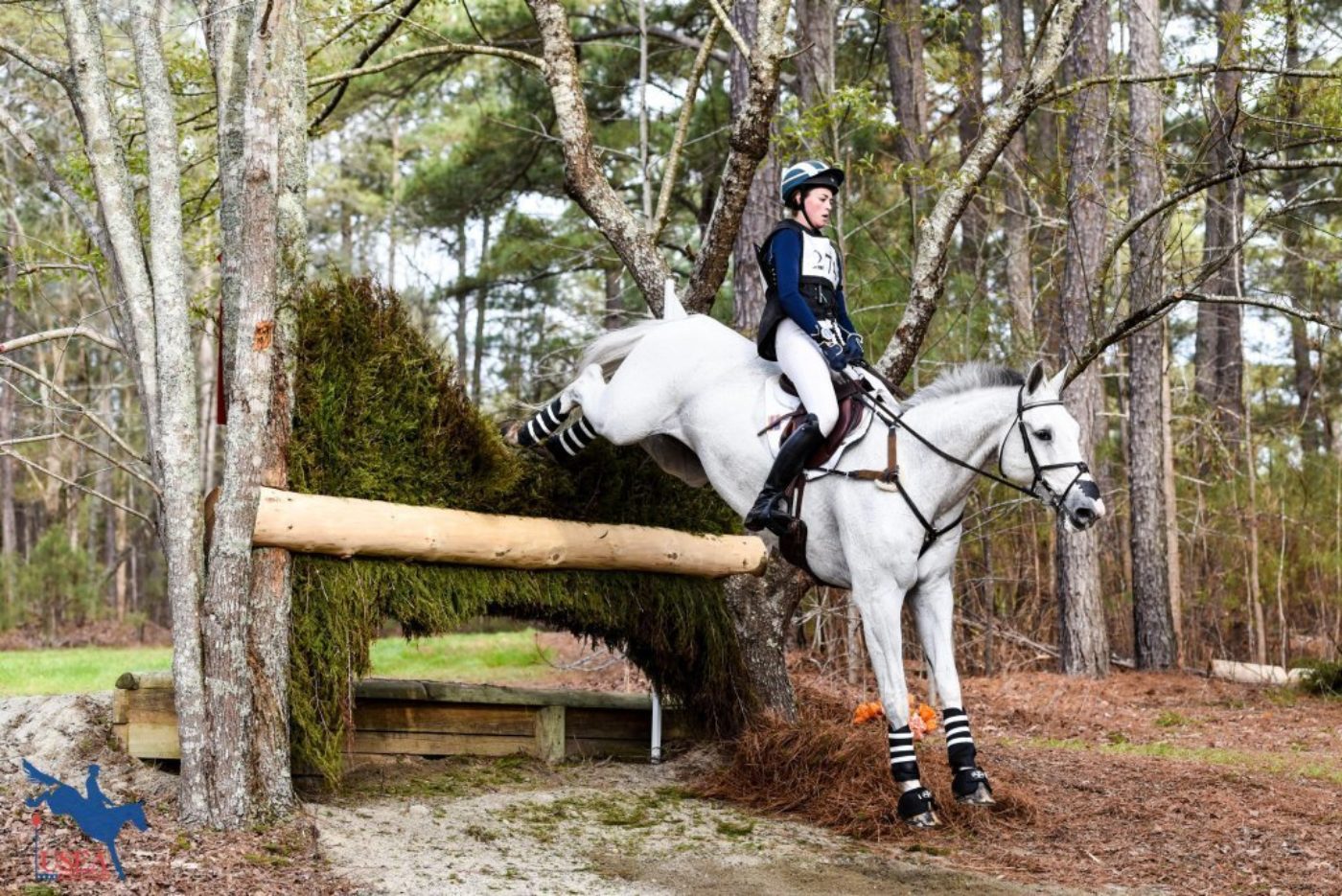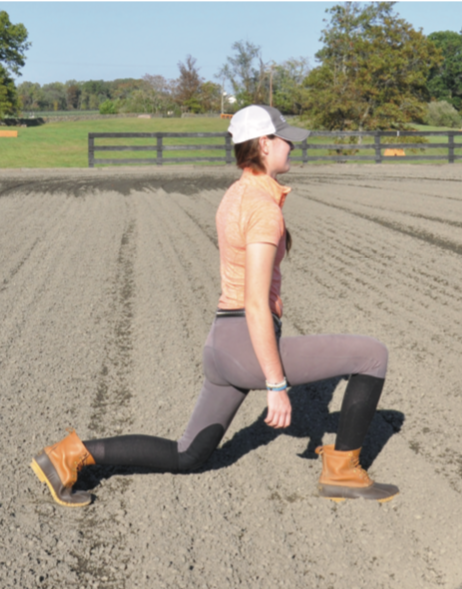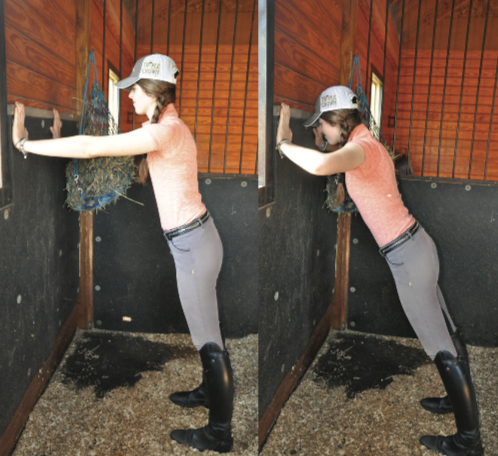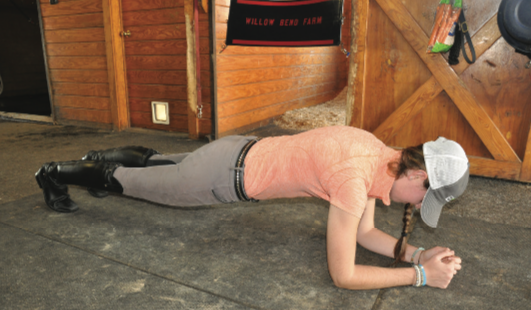

This article originally appeared in the November/December 2017 issue of Eventing USA magazine.
We feed our horses for optimal performance, spend countless hours practicing all aspects of the dressage test to get the lowest score possible, we do grids, we do trot, canter, and gallop sets, then place the best quality shoes and boots on our horses to protect their legs. We do all of this, yet when it comes to rider fitness few riders treat themselves like the athletes they are. While most eventers are fitter than the general population, are we fit enough for ideal performance in the saddle?
We as eventers understand the work and demand that goes into maintaining a barn. However, we should not confuse barn chores with “exercise.” Barn work entails grueling activities that wear down the body and can compromise the health of a rider. My criteria for exercise is that it is safe, does not undermine the health of the individual, and develops a positive physiological change.
Barn work is a functional activity with the point of taking care of the horses, not strengthening a rider’s body. While some physiological change may be a byproduct, it is not through targeted and specific means. It is easy for us as humans to rationalize our hard work as exercise. But in truth, we are selling ourselves and our horses short. Exercise outside of the saddle is beneficial to the rider. However, with improved fitness, one is less likely to fatigue leading to mistakes that confuse – or worse – upset the horse.

Regularly performed chores in the barn generally do not strengthen an individual, but break down his or her body through excessive wear and tear. Barn chores can actually lead to chronic overuse injury, rather than the results of strengthening the body. To ride one must remain injury free. Chronic overuse injury can be just as hurtful to performance in the saddle as acute injury, like a broken arm or broken leg.
This is not to discourage anyone from doing barn work. What I am advocating rather is that you work muscle groups that are antagonistic
to the muscles that you regularly use shoveling shavings and pushing wheelbarrows. While most riders have extremely strong upper backs, our chest muscles tend to lack. So ideally one should be doing exercise to work your pectoralis to stabilize and strengthen the upper body. The same applies to our lower body – it is important to strengthen the hip abductors to balance the already strong hip adductors.
Each exercise should be done to the point of momentary muscle failure, generally referred to as “failure.” While this term may sound scary, failure is the point at which your working muscle is fully fatigued, so that it can no longer move the weight without sacrificing strict form. The most common way people will sacrifice form is by speeding up.

Before beginning barn chores, do one wall pushup to failure.

Do this in the middle of barn chores during a slow point, but after you are done with pushing around the wheel barrow.
Ideal Equipment: Use buckets with flat or rolling handles like the ones pictured here. With water buckets you can easily change the resistance by adding or pouring out water. You should do one set to failure in a minute and 30 seconds. If you are able to do this exercise in perfect form for more than two minutes, add more water.

Finish your barn chores with a plank. You have worked hard and you are almost done. Just one more exercise to failure.
You should not do this routine each time you are doing barn chores, but instead add this routine once or twice a week at most. Exercise, much like barn chores, can be overdone and it is imperative to not undermine the importance of rest and recovery. To build muscle, the body requires proper exercise, nutrition, and recovery time for the tissues to repair and strengthen. In our eagerness to improve, we often overlook rest and recovery, which is just as important as exercise and nutrition.
These exercises can be applied to professionals, working students, amateurs, beginners, and everyone in between. We are athletes and we need to treat ourselves like athletes, whether you are working in a big barn or a backyard operation. We must make the time and find a safe place to do these exercises.
As the competition season slows down in November and December, eventers have the ideal opportunity to start adding to their fitness routine. The wind down after the busy competition season is a great time to find what works and what does not for you. However, exercise should not just be saved for the off season, but instead be a year-round endeavor.
Some people like to say that January first is a great time to start focusing on your own health and fitness. New Year’s resolutions tend to hold a lot of weight for about two weeks then get dropped. Remember this is not a New Year’s resolution, exercise outside of the saddle is done to improve performance, our effectiveness of aids and the connection with our horses.
Laura Crump Anderson holds a degree in kinesiology with a concentration in exercise science from Longwood University. She focuses on rider fitness and establishing exercise regimens that work for the competitive equestrian. She completed a 400 hour internship under the tutelage of physical therapist Jill McKay as well as FEI level trainer Sara Spofford. Upon graduation Laura is the founder of Hiddenheights Equestrian Fitness LLC and is a strength-training instructor at INFORM FITNESS. She developed a passion for sustainable programs that have the benefits of strength training without losing time in saddle.
Did you enjoy this article? Want to receive Eventing USA straight to your mailbox? Members receive Eventing USA as part of their USEA Membership or you can purchase individual issues from the USEA Shop.
Great Britain’s Yasmin Ingham and Banzai du Loir found themselves in a familiar position today at the top of the leaderboard after dressage at the Defender Kentucky Three-Day Event, scoring a 26.0. A year ago, Ingham and “Banzai” led the field heading into cross-country after Friday’s dressage, but they drew an earlier start this year, and Ingham’s got a few more challengers to come tomorrow.
In comparison to many of his other upper-level event horses, Commando 3, or “Connor” as he is known in the barn, is still a newer ride for Boyd Martin, but that hasn’t held the pair back.
Are you following along with the action from home this weekend? Or maybe you're competing at an event and need information fast. Either way, we’ve got you covered! Check out the USEA’s Weekend Quick Links for links to information including the prize list, ride times, live scores, and more for all the events running this weekend.
Let the fun and games begin! This morning kicks off the official start of competition at the 2024 Defender Kentucky Three-Day Event (K3DE). The hefty four-star field is the first to set foot in the Rolex Stadium starting at 8:00 a.m. Last year we saw 49 four-star pairs in this division, but this year there are 63 pairs in the field.